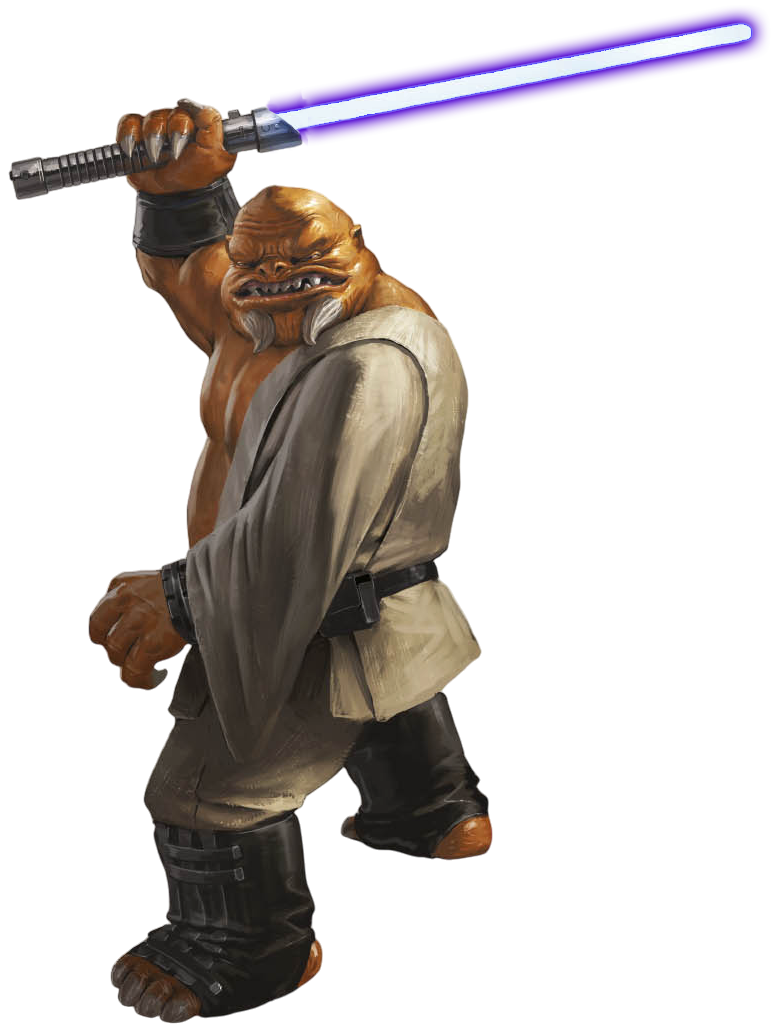Form VII, also known as The Ferocity Form, represented the seventh style of lightsaber combat, and it's most well-known disciplines were Juyo and Vaapad. It was widely regarded as the most volatile and forceful of all forms. Within the Jedi Order, Mace Windu and Depa Billaba stood out as the only known masters of the Vaapad style who hadn't succumbed to the dark side of the Force. Although, the latter Jedi Master primarily utilized Form III during close-range engagements. The Juyo style was commonly favored by dark side adepts such as Darth Maul, a Sith Lord, and The Grand Inquisitor, a member of the Inquisitorius.

Even though designated as Form VII, Juyo's evolution predates its formalization by millennia. It's believed that Juyo originated from techniques deemed too risky and aggressive, initially discarded from Shii-Cho during the early years of the Jedi Order. Over the subsequent centuries, the methods that would eventually define Juyo were practiced sometimes overtly, and at other times covertly. The Ferocity Form was eventually acknowledged by the Jedi High Council, only to be prohibited shortly after, a little over a century later.
Juyo was an exceptionally aggressive style, even surpassing Form IV in intensity. Its defining characteristic, distinguishing it from other lightsaber forms, was the specific emotional state it nurtured and even demanded. Form VII earned its title of the Ferocity Form rightfully; Juyo not only employed a fiercely aggressive offense but also necessitated that practitioners actively harness their anger and negative emotions to fuel the constant attack.
Unsurprisingly, Form VII sparked controversy from the beginning, with many viewing its practice as a direct violation of the Jedi Code's principles against passion and disorder. The Jedi Council likely recognized the form only due to the dire circumstances of its emergence, during a resurgence of the Sith approximately four thousand years prior to the Clone Wars. Juyo saw extensive use among both the Jedi and their ancient adversaries for decades as the two orders of Force users clashed. However, by the conclusion of this significant war against the Sith, numerous Jedi who practiced Form VII had either fallen to the dark side or teetered precariously close. Following the conflict, with the consequences clear, the Jedi Council prohibited the study of Juyo. Over the ensuing millennia, this restriction gradually eased to some extent. Nevertheless, Form VII would never again be practiced by Jedi except for those who received explicit permission from the council or defied its directives.
To sustain the onslaught of Form VII without becoming exhausted, providing the enemy with an opportunity, or compromising accuracy, a practitioner had to channel the Force with every action and strike. This focused channeling is what makes Juyo so dangerous to opponents, but it also posed a risk to the warrior themselves. Since Form VII relied on a negative emotional state, continuously and heavily drawing upon the Force brought the practitioner dangerously close to the dark side of the Force.

Vaapad, the only Form VII variant recognized by the Jedi Council, was developed in the final decades of the Jedi Order. Jedi Master Mace Windu was the primary architect of Vaapad, creating the form to address his personal weaknesses by controlling his inner darkness and redirecting it toward noble purposes. To achieve this, he refined advancements from previous centuries and, in some opinions, ultimately perfected Form VII as a true lightsaber form aligned with the principles of the Jedi Code.
Vaapad was an exceptionally challenging form of lightsaber combat, with only a select few Jedi receiving training in it before the implementation of Order 66 and the destruction of the Jedi Order. Even Windu himself was cautious about allowing others to study the form beyond his own Padawan, Depa Billaba, recognizing the inherent risks. Vaapad practitioners tapped into their anger and passion but never succumbed to them. In comparison to other lightsaber forms that instructed warriors to control their emotions, Vaapad's approach was perilous. However, it was not as unrestrained as Juyo's method of utilizing unchecked aggression.
Despite its refinements over Juyo, Vaapad remained Form VII at its core when observed in battle. The Form VII practitioner fought with a controlled intensity, delivering a combination of swift, rapid attacks and powerful blows. Both styles of the form were physically and emotionally demanding, and in some ways, they echoed the straightforward, kinetic simplicity of Shii-Cho.